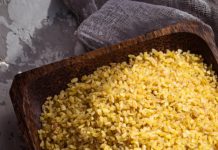For each type of kitchen work, a device has been invented. You can cook using universal knives, but they will not allow you to do the work as thinly as a special tool. In the arsenal of a real cook, there must be a knife for cutting fish on a fillet. Specific devices simplify the preparation process, playing an important role in serving dishes to the table.
Material Content:
Distinctive features of a knife for cutting fish on a fillet
For accurate work with fish fillet you need a special knife. Its quality is subject to specific requirements. The tool has a recognizable shape and certain physical properties that distinguish it from other knives.
Blade. Steel: strength and flexibility
A fillet knife can be recognized immediately by the shape of the blade. It is made thin and long. At the end, it has an elongated tip.
The length of the blade varies from 13 to 30 cm. For the most popular knives, this value lies within 15-19 cm. A knife with a blade of up to 20 cm is considered universal and is suitable for cutting medium and large fish.

The blade has a very sharp cutting edge, which is sharpened at an angle of 20-25 degrees. With a special tool, it is thinner than with a chef’s knife. With this blade, you can separate the fillet in one motion.
An important quality of the knife is the perfect combination of strength and flexibility, length and thickness. The longer the blade, the more durable the steel should be. If the knife begins to bend more than 3 cm, they simply will not be able to work.
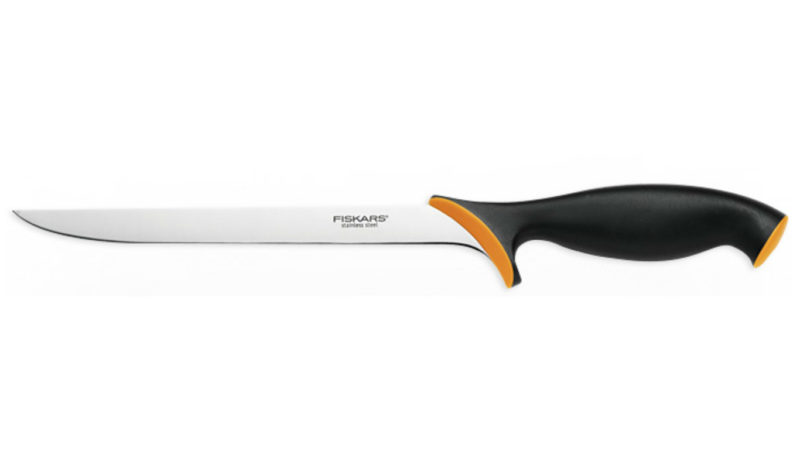
Quality blades are made from alloy steel. The strength of good material lies in the range of 54-60 Rockwell units. The best knives are recognized tools from Damascus steel, since they are almost impossible to blunt.And high cutting properties are the main quality of a fillet knife.
However, such material, in addition to high cost, has other disadvantages. Damascus steel, unfortunately, is not very resistant to corrosion, and therefore requires special handling. It is generally recommended that it be stored in oil to prevent damage.
Handle. Wood or plastic?
A knife with a wooden handle looks noble. But, perhaps, such tools should not be used for cutting fish. The tree absorbs the smell, while seafood is very persistent.
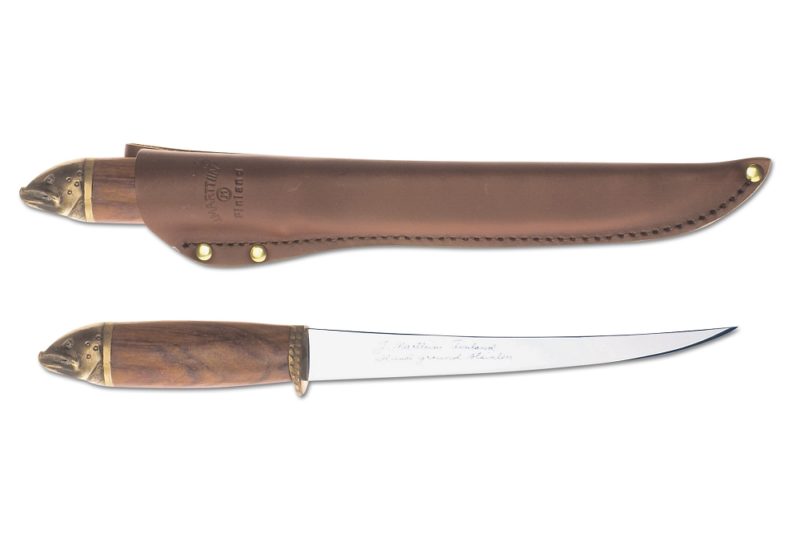
The wooden handle is unstable to moisture and has microscopic grooves on the surface. All this creates the conditions for the development of pathogenic flora. In addition, such a knife when wet becomes slippery, uncomfortable to use and dangerous to handle.
The best material for the handle of a fillet knife is plastic, inert to water and easy to sanitize. It is convenient to wield a knife with such a frame. It is light in weight and lies firmly in the hand.
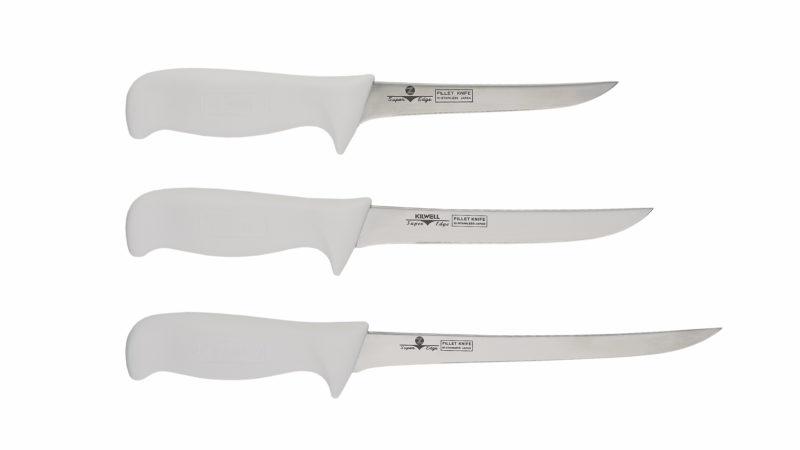
Even better if the handle has a rubberized insert. Rubber has excellent grip on the skin. The knife will definitely not slip out of your hands. It will be harder for them to get hurt. Since it is very sharp, it is worth thinking about security.
The handle of a fish fillet knife also has a special shape. There is no finger rest on top of it. The blade goes smoothly into the handle. There is an emphasis on the underside, designed to make the tool comfortably in your hand.
Sheath
Fillet knives are always delivered in a case. The scabbard is both a part of safety and a guarantee of the safety of the purchased goods.
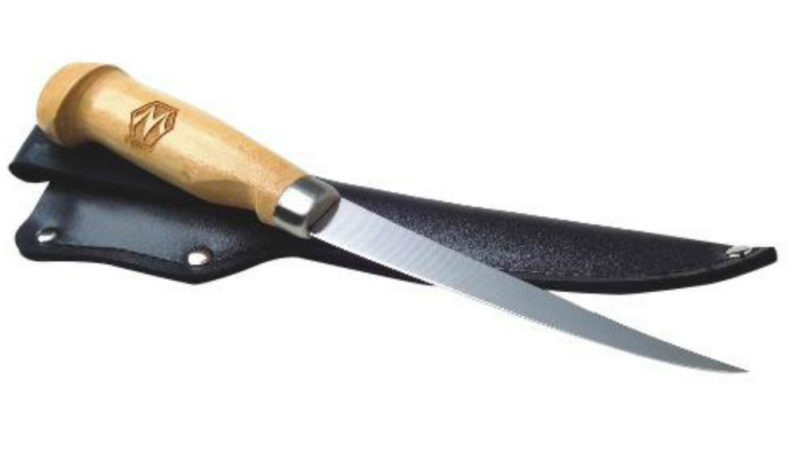
Fillet knife should not be stored open. It’s easy for them to get hurt. He also quickly dulls, in contact with other kitchen appliances in the drawer. So always store the fillet knife either in the scabbard, or in the case, or in a wooden block.
Factory sheaths can have various recesses and loops, for which they can easily be hung on frames for kitchen equipment. So the question of storage disappears by itself.
Sharpening whetstone. Choosing the right one!
In order not to suffer from this issue, it is better to immediately purchase a knife, which comes with a whetstone in the kit. Such a set will cost more, but the sharpening tool in all respects will exactly match the knife.
Rockwell instruments with strengths ranging from 55 to 60 are well managed with musat. It looks like a long metal pin with an abrasive surface. A steel tool is suitable for a sirloin knife.
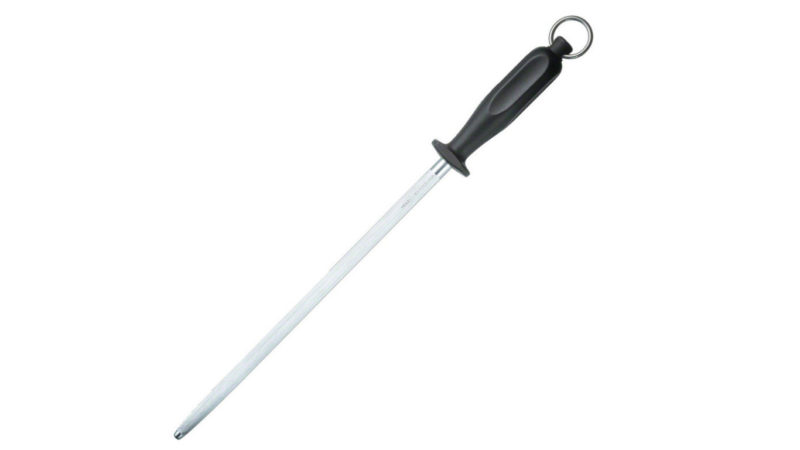
Musat removes a minimum of metal, and smooths out bumps. A good tool is made of magnetized material that attracts metal chips. The best sharpening properties are possessed by musates with diamond dusting and medium grit. The length of the pin should be 5-6 cm longer than the length of the knife blade.
Direct assignment
The loin knife has an extremely narrow focus. Perhaps that is why he is not so popular among ordinary housewives. Its only function is to separate the fish fillet from the ridge.
It is inconvenient for them to use for thin and rough cutting, cleaning and other operations.
The knife should have a sharp end of the blade so that it is convenient for them to make thin cuts of the skin along the carcass. Further, all attention flows to his cutting abilities. The knife, as a rule, smoothly stretches along the ridge. Then they treat the edges of the fillet, cutting off the film, grease and bumps.
How to choose a fish fillet knife
If you are looking for a fillet knife for fish, which one you can’t immediately choose, especially when faced with a dilemma for the first time. First of all, evaluate your financial ability. Good knives are expensive. However, a quality tool can last a lifetime and is unlikely to require replacement.
More materials: fish fillet knife
In all the variety of offers it is difficult to navigate only by price. If you want to make a truly worthwhile purchase, pay attention to the manufacturer.World-famous brands produce goods that you regret about buying, you definitely won’t have to.

An important characteristic of the implement is the length of the blade. If it’s difficult for you to figure out what size fish will be cut more often, choose a universal knife with a blade 19 cm long.
Pay attention to the quality of steel:
- stainless alloy;
- alloy steel;
- Damask steel.
Preference should be given to alloyed. It is a material with optimal parameters of strength, flexibility and corrosion resistance.
A long blade should not be too flexible. Check how he is able to deviate. If more than 3 cm - put such a knife aside. This value is the best option. Too tight a knife in operation will also be inconvenient.
A self-respecting manufacturer indicates the value of the hardness of steel. See if the labeling contains information about this parameter. Choose fillet knives for cutting fish with a hardness of 54 to 60 units.
Be sure to pay attention to the material of the handle. Discard knives with a wooden handle. Try to hold the knife in your hand. Determine for yourself how convenient it is. Are there finger rests on the handle? Imagine how comfortable it will be to wield such a knife.

A device that will slip out of your hands is completely unsuitable for work. Not only is it unsafe, such a tool also makes you spend longer with fish. The inconvenience may affect the quality of the cut. A bad tool is quite capable of spoiling the appearance of the whole dish.
Expensive knives come with a sharpener. As you know, the best knife is a sharp knife.
Manufacturers
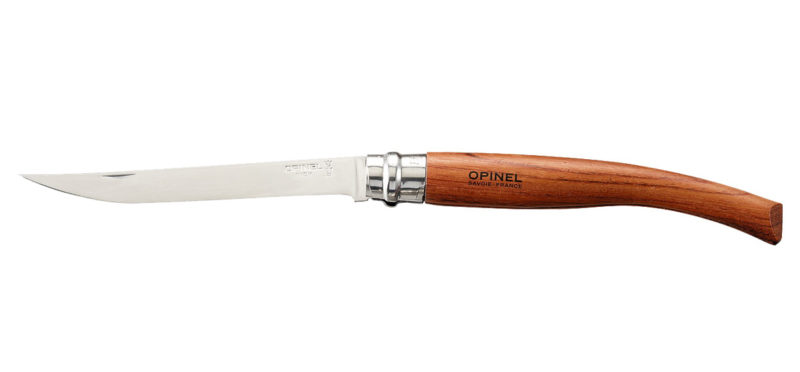
The leaders in the production of sirloin knives for fish are Japanese companies. And this is not surprising. Where else but in Japan do they know how to handle fish properly ?! Among the brands belonging to this country, one can distinguish: “Kasumi”, “Yaxell” and “Hattori”.
European states are also experts in the production of fillet knives. Among the leaders can be noted: Germany, France, Spain, Finland.
Accordingly, the following brands are registered in these countries:
- Wuesthof, Fissler, F.Dick;
- Sabatier, Opinel;
- Arcos
- "Rapala."
There are many little-known manufacturers on the market, among whose products it is also possible to find good specimens.
Cost in Russia
A quality knife cannot be cheap. Its price includes the cost of steelmaking technology. The more reliable the tool, the higher its value.
A knife from an unknown manufacturer costs up to 600-700 rubles. Within a thousand, you can buy a good tool from a Spanish manufacturer.
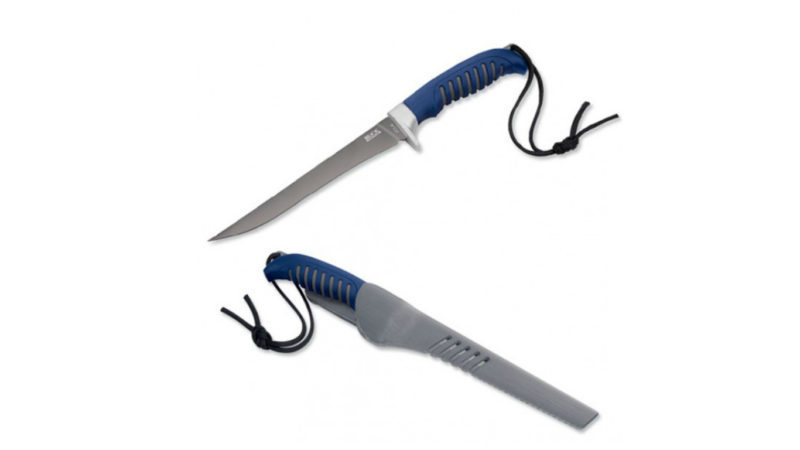
The price of a quality knife made in Europe starts from one and a half thousand rubles. Damascus steel tools can cost between 5,000 and more. Japanese and German knives are one of the most expensive. The upper limit of the price reaches about 18,000 rubles.
Be sure to add a good sirloin fish knife to your arsenal of kitchen utensils. Now you know what it is for, and which is better to choose.



